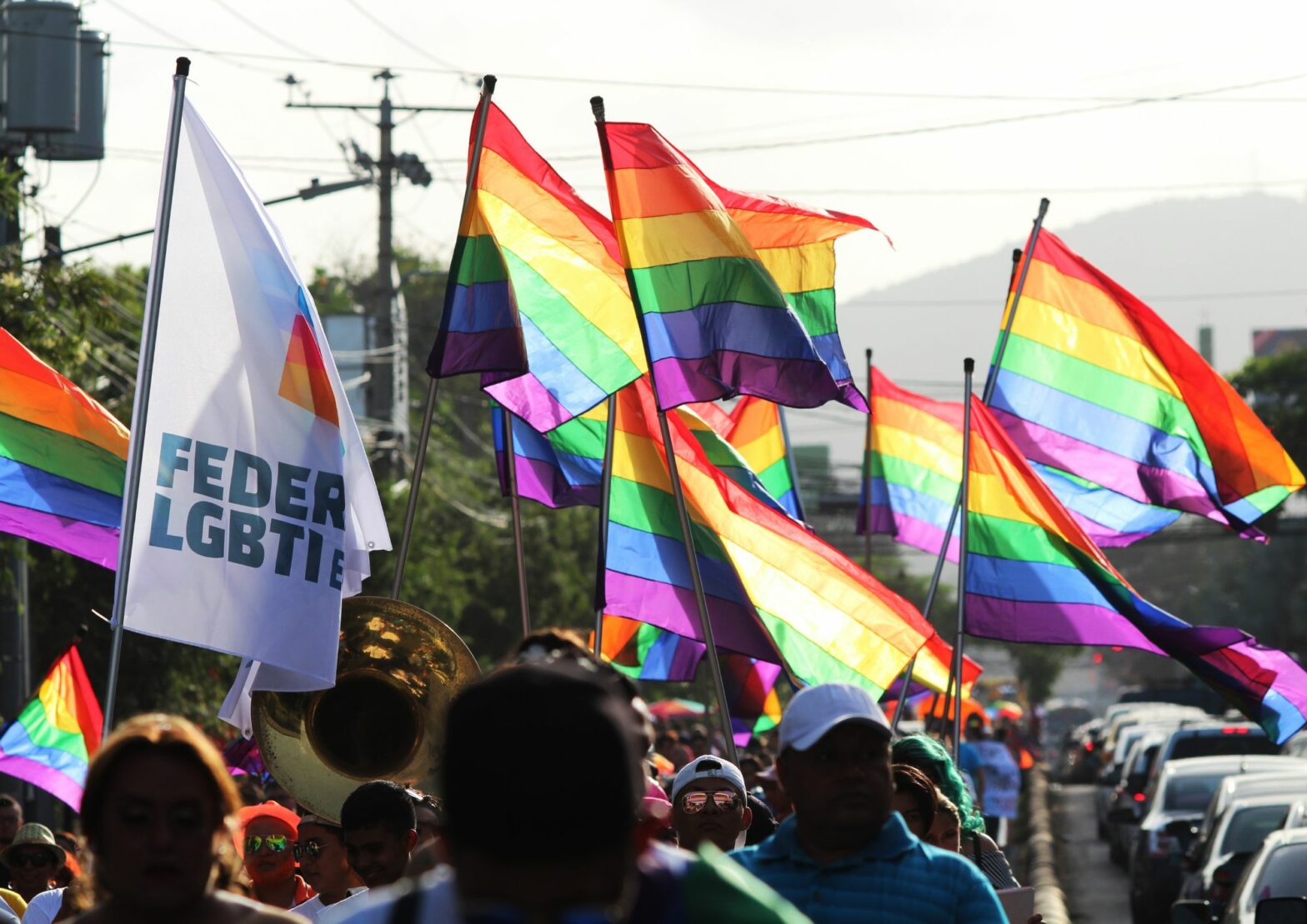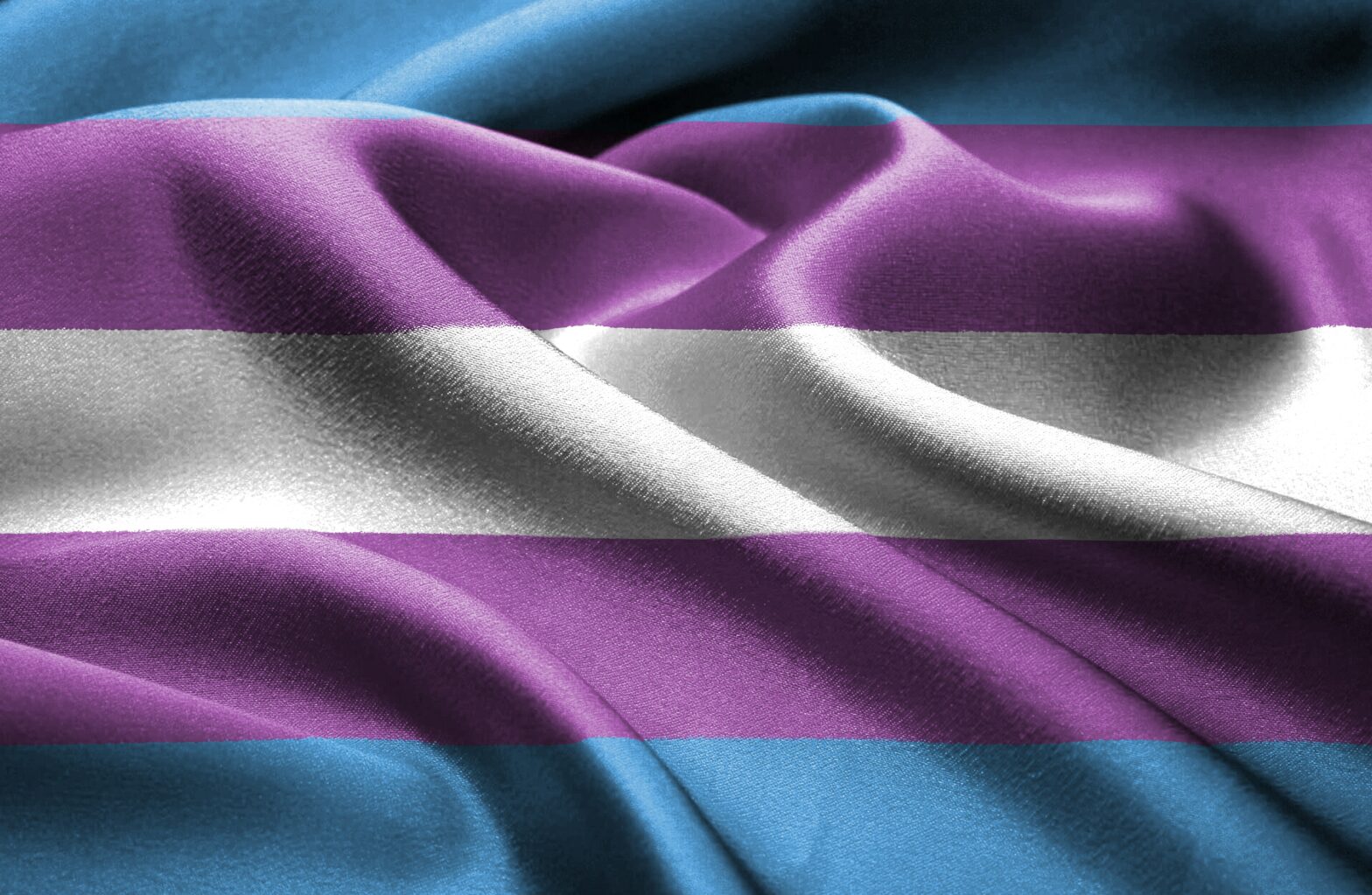Share Twitter Facebook Email Copy URL
This article is part of our series dedicated to the 75th anniversary of the Universal Declaration of Human Rights.
Introduction
In 2022, the life expectancy of transgender people is half that of the cisgender population[1]. 41% of trans people have attempted suicide, a rate 26 times higher than the rest of the general population[2].
How can such inequalities be explained? One answer lies in the barriers to access to gender transition care. This care enables the transition to the gender identified to, and away from the gender assigned at birth.
Articles 1 and 2 of the Universal Declaration of Human Rights (UDHR) state that “All human beings are born free and equal in dignity and rights[3]” and that “human rights” are to be applied to all human beings “without distinction of any kind, such as race, colour, sex, language, religion, political or other opinion[4]“. However, in view of the above statistics, it is clear that transgender people do not enjoy sufficient protection and are not “[equal] in dignity and rights” with cisgender people. Yet free access to medical care is also protected by the UDHR, in Article 25:
“(1) Everyone has the right to a standard of living adequate for the health and well-being of himself and of his family, including food, clothing, housing and medical care and necessary social services[5] […]”.
In 1948, the UDHR marked a major turning point for humanity. Following two extremely deadly world wars, it was imperative to demonstrate that there was still humanity left. But what is the protected humanity? The French version of the Universal Declaration of Human Rights [ndlr. Déclaration Universelle des Droits de l’Homme] is already anchored in the protection of cisgender and heterosexual men. Many groups will remain in the shadow of this declaration in defense of cisgender men.
Today, I would like to pay a little attention to one of those groups lacking protection: transgender people.
Definitions
Transgender, trans: Any person who does not identify with the gender assigned to them at birth.
Transgender man: A man, but who was assigned a girl at birth.
Transgender woman: A woman, but who was assigned a boy at birth.
Cisgender: Any person who identifies with the gender assigned to them at birth. Contrary to transgender.
Gender dysphoria: Distress experienced when there is a mismatch between the gender assigned at birth and the gender with which one identifies.
Homosexual: Gender and sexual attraction are two separate concepts. A homosexual person is sexually attracted to a person of the same gender.
Since 1975, the international community has classified transgender people as pathological and unfit to manage their own bodies until 2019. Transidentity was included in the International Classification of Diseases No. 9 (ICD-9) in 1975, in Chapter V “Mental Disorders”, under the heading “Trans-sexualism (302.5)”. For 44 years, this pathologisation of transidentity has led to the control of trans bodies by medical circles. It has become compulsory to undergo a thorough psychiatric examination before obtaining authorization for any intervention related to gender transition[6]. Many transgender people feel humiliated by this requirement[7]. They are seen as sick and unable to make decisions for themselves. In 2019, transidentity was be removed from the chapter on Mental Disorders, reducing the stigma attached to transgender people.
What trans people want
All transgender people are different. There are two types of transition. Social transition and medical transition. Social transition concerns the change of gender in the social arena. This can include asking to be referred to with new pronouns and a new first name. It may also involve changing official documents, such as the first name and gender on identity papers. It may be that only a social transition, with no medical transition, will be carried out. Under no circumstances is it necessary to undergo medical intervention to be transgender.
If a trans person wishes to undertake a medical transition, there are several options.
- Trans women can feminize their bodies by taking testosterone blockers or the female hormone oestrogen. They can also consider surgical procedures such as facial feminization, breast augmentation and/or vaginoplasty.
- Trans men can masculinize their bodies by taking testosterone. They can choose to have a mastectomy, a surgical operation to remove the breasts. Phalloplasty, a surgical procedure to reconstruct a neo-penis, is also an option.
Access to these procedures is regulated differently in each country. Many transgender associations are calling for self-determination over their bodies, in other words, free access to these procedures without prior psychiatric approval.
History of transgender visibility
The first academic traces of transidentity date back to 1910 with the book Die Tranvestiten by Magnus Hirschfeld, a German doctor. He explains that there are different stages of “sexual intermediaries”. The last stage is dedicated to “people who do not recognise themselves in the gender assigned to them at birth[8]“. In 1919, Dr Hirschfeld founded the Institute of Sexology in Berlin, a key centre in the development of medical techniques for transition. However, with the rise of Nazism, all his activities were blocked and his institute burnt down[9]. It was not until the end of the Second World War that the scientific community resumed its research into gender transitions.
Before the 1950s, the international community paid very little attention to transgender people. As they were not yet pathologised subjects, access to hormones and surgery was unregulated and did not require psychiatric approval:
“As for hormones, they were sold over the counter in pharmacies in France and transsexuals bought their hormones (mainly ovocyclines) like others buy tomatoes at the market, without a prescription or medical control over doses – and of course without psychiatric follow-up.[10]”
It is true that before pathologisation by international organisations, transgender people did not live free from stigma and discrimination; not that the freedom to choose their own medical procedures could be truly emancipating. However, the 1950s marked the beginning of growing visibility for people we would now call transgender. They occupied more and more space in public life, especially in the nightlife. It was particularly through the transgender cabarets in Paris, which enjoyed years of glory, that trans people became a crucial emblem of Parisian nightlife[11]. Coccinelle, in particular, became very famous and marked the beginning of greater visibility for people who did not agree with the gender they were assigned at birth. However, they were only entitled to the glory of the night. They only had a place on stage, confined to the nocturnal sphere, the spectacle, but above all the spectacular to satisfy the curiosity of cisgender people[12].
At the same time, international scientific communities began to take an interest in what was still only identified as “transvestism”[13]. In 1952, Christine Jorgensen, a trans woman, achieved incredible fame. The media coverage of her operations brought the existence of medical interventions to change gender into the popular imagination[14]. Mrs Jorgensen was the most talked-about subject in the media in 1953[15]. All this visibility led to the first definition of transidentity in 1954 under the name “Transsexualism”. Harry Benjamin, a German-born American endocrinologist and former student of Magnus Hirschfeld, published “Transvestism and Transsexualism”[16]. He wanted to differentiate transidentity from homosexuality and transvestism:
“Transsexualism is a nosographic entity that is neither perversion nor homosexuality. It is the feeling of belonging to the opposite sex and the correlative desire for bodily transformation[17]“.
The increased visibility of trans people, via transgender cabarets or with the media coverage of the first surgical operations in Europe, is not without consequences. As visibility increased, so did the structures of repression[18], and trans-identity was included in the International Classification of Diseases No. 9 (ICD-9) in 1975. This entry marks the beginning of the institutional and international stigmatisation of trans people. In Chapter V on Mental Disorders, within the section “Neurotic disorders, personality disorders and other non-psychotic mental disorders (300-316)”, under “Sexual deviations and disorders (302)”, “Trans-sexualism (302.5)” is defined as:
“A sexual deviation centred on fixed beliefs that manifest bodily sex is incorrect. This results in the modification of the sexual organs by operation, or the complete concealment of the bodily sex by adopting both the clothes and behaviour of the opposite sex[19]“.
From that moment on, the fate of trans people is sealed: their free access to life-saving care is denied. Medical control was established over their bodies. The classification of “mentally ill” deprived them of their capacity for discernment.
In Switzerland
There is currently no mention of transgender people or gender identity in Swiss law[20]. Regulations on access to healthcare for transgender people are therefore under the jurisdiction of international classifications.
This means that any transgender person seeking medical, surgical or hormonal intervention must obtain a “gender dysphoria certificate” or a “gender incongruence certificate”. This certificate can only be issued by a psychiatrist and allows medical treatment to be reimbursed by health insurance. Without this certificate, access to care is restricted and insurance reimbursement is refused. Transgender people therefore find themselves obliged to undergo psychiatric treatment, which is the key to their medical treatment.
As far as social transition is concerned, until 2012, the Swiss courts required transgender people to undergo forced sterilisation in order to change the gender on their identity papers. Since 2012, it has been necessary to prove that “irreversible measures” have been taken in order to obtain an official gender change. By “irreversibility measures” was meant medical interventions. In 2022, Switzerland takes a major step forward in recognising transgender people and allows them to change their official gender and first name simply by making a declaration to the civil registry office – it is no longer necessary to provide proof of medical interventions.
Conclusion
The Universal Declaration of Human Rights is a key document that allowed theorizing and highlighting universal human rights. While celebrating this document, it is important to put in place other binding treaties to better protect discriminated and/or marginalised populations, as is still the case today for transgender people. This would extend the scope of the UDHR to groups that, in 1948, were not even named. In 2023, trans-identity has become a subject of discussion, both in the private sphere and in the political, media and institutional spheres.
It is imperative that this visibility translates into greater protection of their rights, starting with simplified access to transition care.
Léon Salin is a transgender activist in French-speaking Switzerland. He fights for better representation of trans people through social networks, in particular Instagram and TikTok (@salinleon). President of the Salin Association, he visits schools, businesses and institutions to provide education on transidentity. This article was originally written in French.
[1] HUGHES, L. D., KING, W. M., GAMAREL, K. E., et al. (2022). “Differences in All-Cause Mortality Among Transgender and Non-Transgender People Enrolled in Private Insurance”, dans Demography, 59(3), p. 1023. https://doi.org/10.1215/00703370-9942002.
[2] SAFER, J. D., et al. (2016). “Barriers to healthcare for transgender individuals”, dans Current opinion in endocrinology, diabetes, and obesity, 23(2), p. 168
[3] Assemblée générale des Nations unies, Déclaration universelle des droits de l’Homme, Paris, Nations Unies, 1948, Article 1
[4] Ibid., Article 2
[5] Déclaration universelle des droits de l’homme (DUDH), 1948, Nations Unies, p. 6
[6] LEOBON, Alain (dir.), « Enjeux de santé des personnes trans : État actuel des connaissances et inclusion dans l’édition 2019 du Net LGBTG+ Baromètre », dans HAL, 2020, p. 3
[7] BUJON, Thomas & DOURLENS, Christine, « Entre médicalisation et dépathologisation : la trajectoire incertaine de la question trans », dans Sciences sociales et santé, vol. 30, 2012, p. 21
[8] FOERSTER, Maxime, Elle ou lui ? Une histoire des transsexuels en France, Paris, La Musardine, 2018, p. 34
[9] Ibid., p. 53
[10] FOERSTER, Maxime, Elle ou lui ? Une histoire des transsexuels en France, Paris, La Musardine, 2018, p. 116
[11] Ibid., p. 130
[12] FOERSTER, Maxime, Elle ou lui ? Une histoire des transsexuels en France, Paris, La Musardine, 2018, p. 130
[13] ALESSANDRIN, Arnaud, Sociologie des Transidentités, Paris, Le Cavalier Bleu, 2018, p. 51
[14] TROMBETTA, Carlo, LIGUORI, Giovanni et BERTOLOTTO, Michele, Management of gender dysphoria, Londres, Springer-Verlag Italia, 2015, p. 21
[15] STRYKER, Susan, Transgender History, New York, Seal Press, 2017, p. 66
[16] ALESSANDRIN, Arnaud, Sociologie des Transidentités, Paris, Le Cavalier Bleu, 2018, p. 53
[17] Trouvé dans ALESSANDRIN, Arnaud, Sociologie des Transidentités, Paris, Le Cavalier Bleu, 2018, p. 62
[18] FOERSTER, Maxime, op. cit., p. 130
[19] Organisation mondiale de la santé, Classification Internationale des Maladies (CIM-9), Genève, Organisation mondiale de la santé, 1977, p. 327
[20] GRESET, Cécile, « Pour une critique du droit Suisse dans une perspective féministe. Le parcours de transition d’une jeune femme trans* », Mémoire de maîtrise en études genre, Université de Genève, 2019, p. 16
This article is part of our series dedicated to the 75th anniversary of the Universal Declaration of Human Rights.



